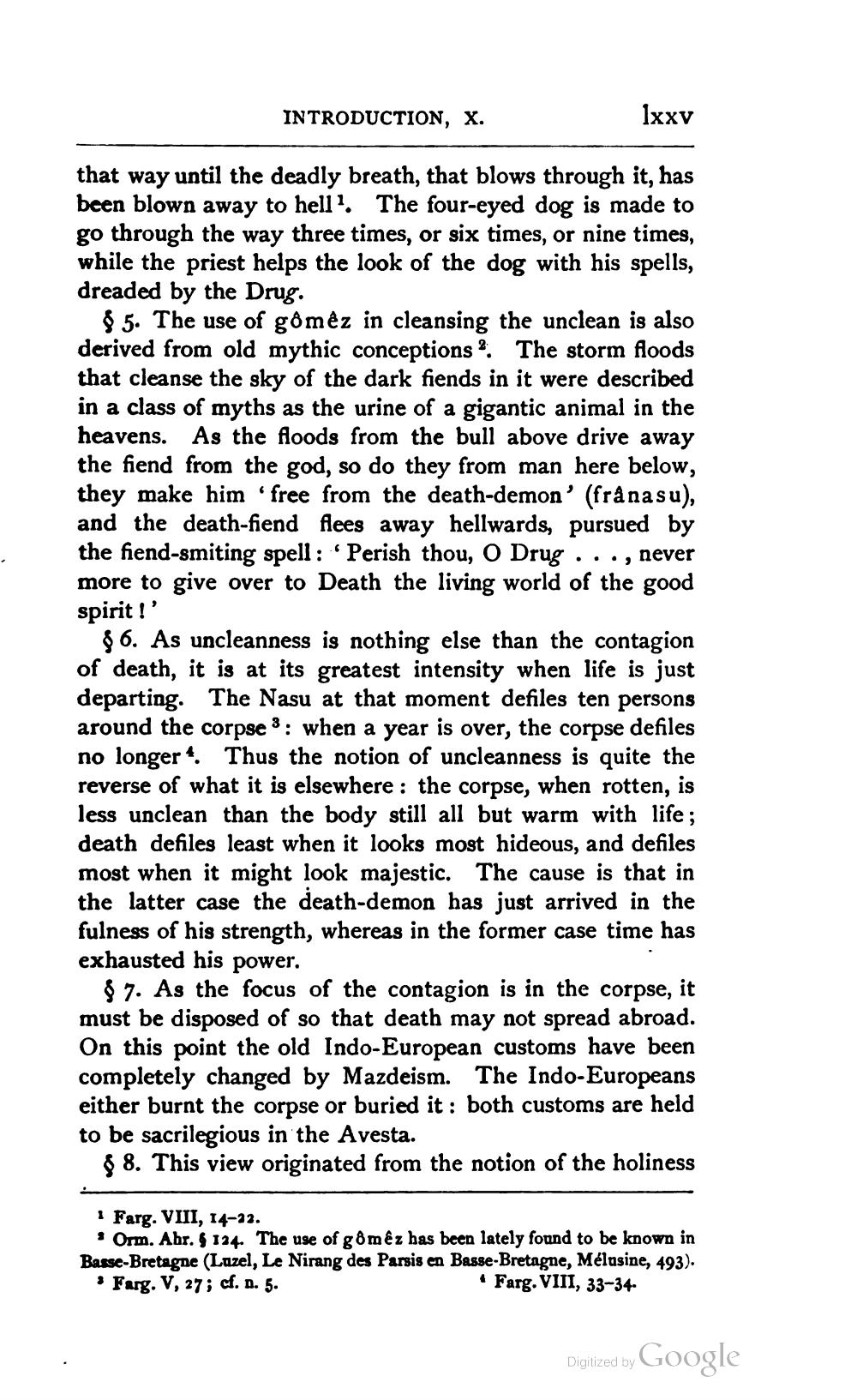________________
INTRODUCTION, X.
1xxv
that way until the deadly breath, that blows through it, has been blown away to hell. The four-eyed dog is made to go through the way three times, or six times, or nine times, while the priest helps the look of the dog with his spells, dreaded by the Drug.
$ 5. The use of gômêz in cleansing the unclean is also derived from old mythic conceptions ? The storm floods that cleanse the sky of the dark fiends in it were described in a class of myths as the urine of a gigantic animal in the heavens. As the floods from the bull above drive away the fiend from the god, so do they from man here below, they make him free from the death-demon' (frånasu), and the death-fiend flees away hellwards, pursued by the fiend-smiting spell : Perish thou, O Drug ..., never more to give over to Death the living world of the good spirit!'
$6. As uncleanness is nothing else than the contagion of death, it is at its greatest intensity when life is just departing. The Nasu at that moment defiles ten persons around the corpse 3: when a year is over, the corpse defiles no longer 4. Thus the notion of uncleanness is quite the reverse of what it is elsewhere : the corpse, when rotten, is less unclean than the body still all but warm with life; death defiles least when it looks most hideous, and defiles most when it might look majestic. The cause is that in the latter case the death-demon has just arrived in the fulness of his strength, whereas in the former case time has exhausted his power.
$ 7. As the focus of the contagion is in the corpse, it must be disposed of so that death may not spread abroad. On this point the old Indo-European customs have been completely changed by Mazdeism. The Indo-Europeans either burnt the corpse or buried it: both customs are held to be sacrilegious in the Avesta.
$ 8. This view originated from the notion of the holiness
i Farg. VIII, 14-12.
• Orm. Abr. 9124. The use of gômêz has been lately found to be known in Basse-Bretagne (Luzel, Le Nirang des Parsis en Basse-Bretagne, Mélusine, 493). • Farg. V, 27; cf. n. 5.
• Farg. VIII, 33-34
Digitized by Google




